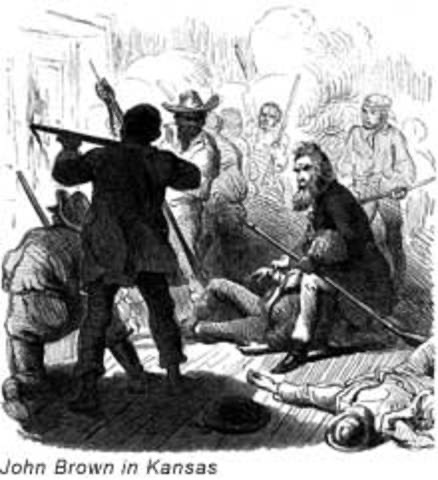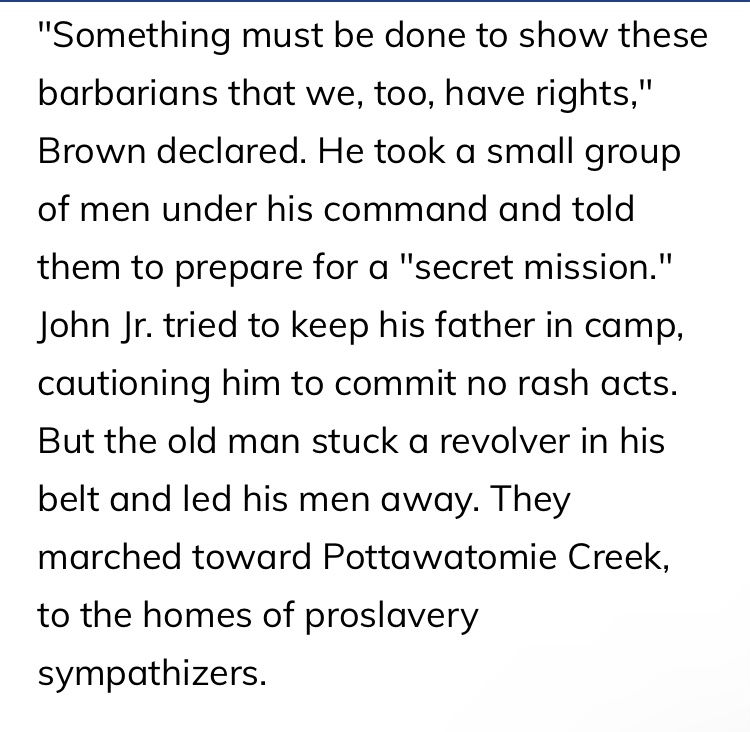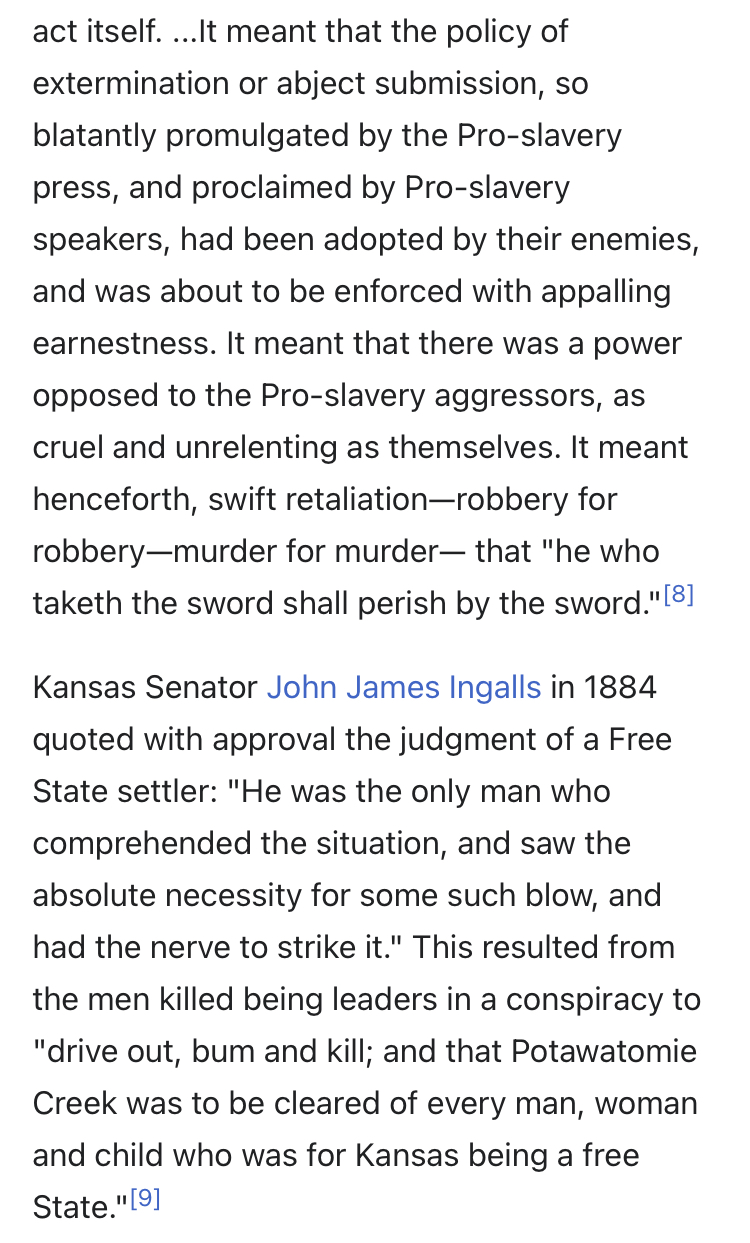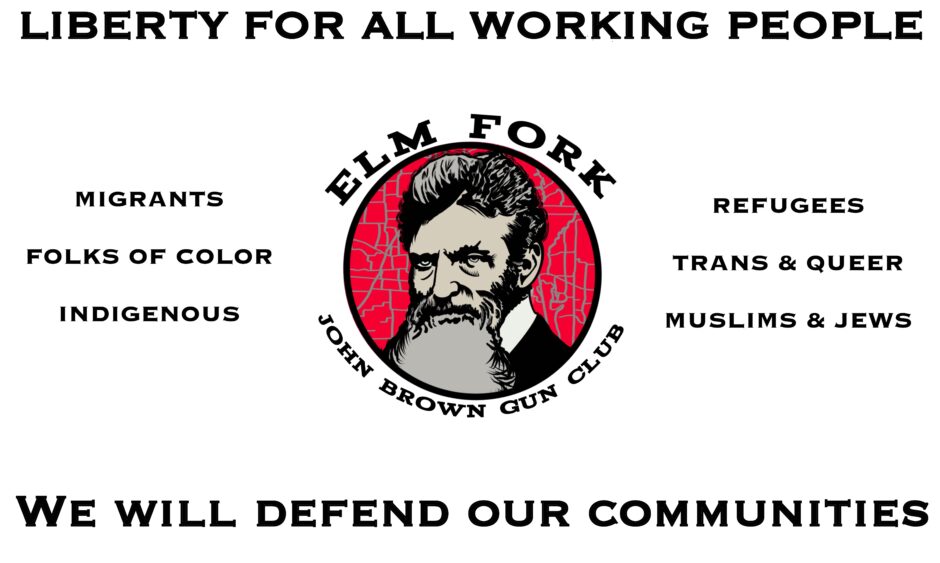On this day, in 1856, John Brown, 4 of his sons, and 2 members of the Pattowatomie Rifles militia carried out the assassinations of 5 pro-slavery partisans.

This act was spurred by the Sack of Lawrence 3 days prior on May 21, in which hundreds of pro-slavery “Border Ruffians” invaded the Free State town of Lawrence to forcibly disarm the populace. They destroyed 2 newspaper offices and burned the Free State Hotel to the ground, while terrorizing and threatening hundreds of residents and waving flags emblazoned with “Southern Rights” and “Supremacy of the White Race.”
It was also caused by the attack on anti-slavery Senator Charles Sumner, who was beaten almost to death with a cane by pro-slavery Congressman Preston Brooks on the floor of the Senate during Sumner’s speech: “Crime against Kansas.”

For years, pro-slavery mobs had attacked and destroyed newspapers and meeting places. They had beaten and murdered abolitionists. They had constantly threatened violence and war.
John Brown decided to strike back.

John Brown’s first Raid shocked and changed the whole country.
Abolitionists had long clung to pacifism. Even after the most prominent abolitionist, William Lloyd Garrison, was kidnapped from an Abolitionist meeting and dragged through the street tied to a rope by a lynch mob threatening to kill him. (The police then “rescued” Garrison by arresting him and holding him in the city jail overnight).

Part of digital collections catalog through a grant from the Institute of Museum and Library Services as administered by the Pennsylvania Department of Education through the Office of Commonwealth Libraries, and the Commonwealth of Pennsylvania, Tom Corbett, Governor, 2013-2014.
By 1856, in Bleeding Kansas, Abolitionists had formed militias to defend themselves, but had never taken any offensive action. Even as families were terrorized and victimized, even after the Sack of Lawrence, abolitionists were still clinging to non-violence.
This was likely due to fear as much as conviction. The Supreme Court had ruled decisively in favor of slavery. The President, Franklin Pierce, had threatened to charge anyone resisting slavery in Kansas with Treason.
The result was an unopposed campaign to exterminate abolitionists and anti-slavery from public life.
John Brown showed that resistance was possible.
He struck fear into the hearts of the pro-slavery paramilitaries who had believed they had a monopoly on violence.
In the aftermath of Pattowatomie, pro-slavery paramilitaries captured 2 of John Brown’s sons who were not on the Raid. John Brown and 30 fighters defeated the 55 pro-slavery Border Ruffians responsible in open battle and captured 23 of them.
They were later exchanged for John Brown’s sons.
In the years before Pattowatomie, the pro-slavery minority had aspired to complete control over the USA. Slavery had won the Supreme Court and multiple Presidencies. The Kansas-Nebraska Act was a pro-slavery victory over the Missouri Compromise.
After being stopped by militant and violent abolitionist forces from their hostile paramilitary takeover of Kansas, pro-slavery leaders and forces lost hope of controlling the USA. This defeat and demoralization directly led to the Slave States seceding in 1861.

